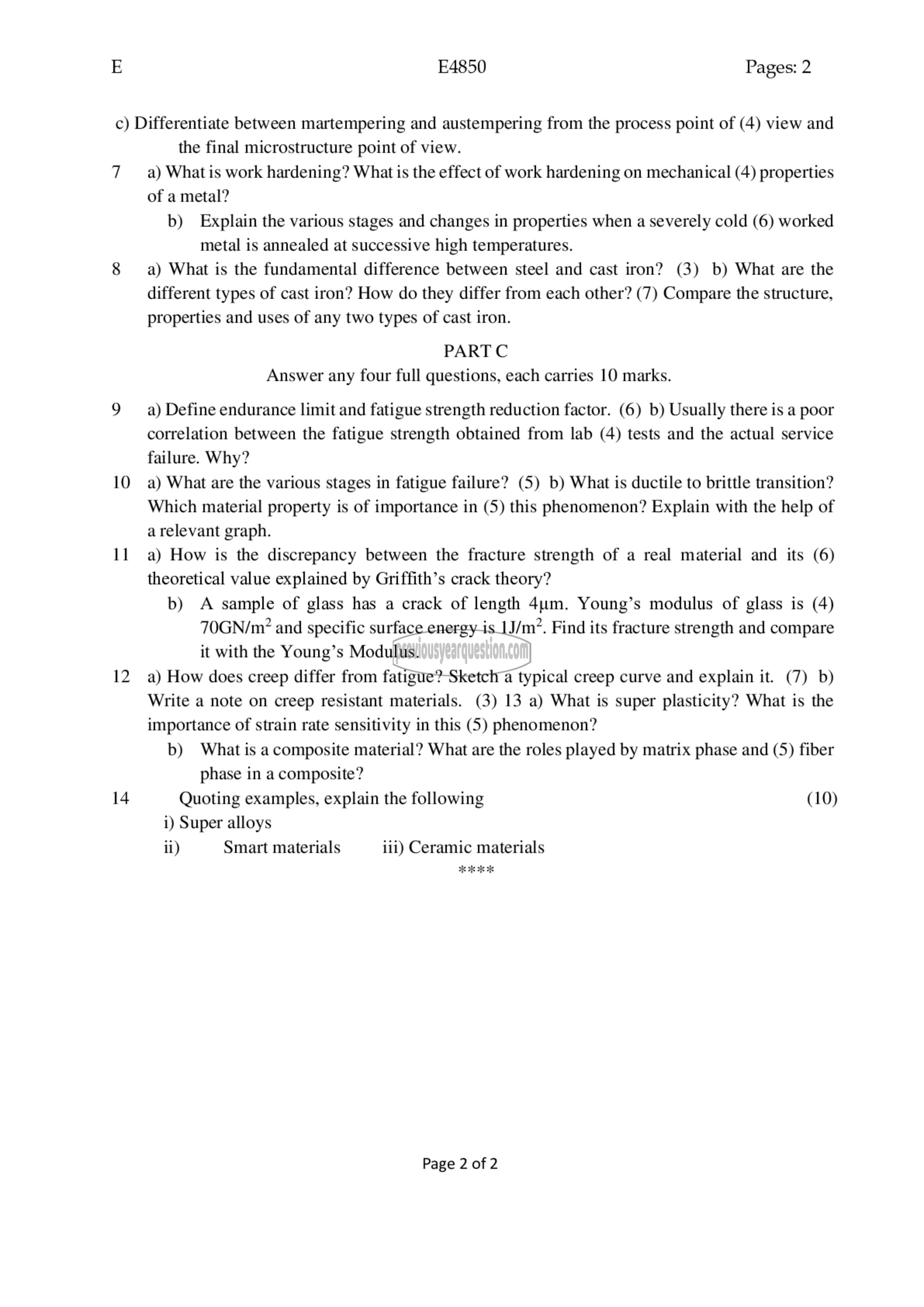APJ ABDUL KALAM TECHNOLOGICAL UNIVERSITY Previous Years Question Paper & Answer
Semester : SEMESTER 3
Subject : Metallurgy & Materials Engineering
Year : 2018
Term : APRIL
Branch : MECHANICAL ENGINEERING
Scheme : 2015 Full Time
Course Code : ME 210
Page:2
E4850 Pages: 2
c) Differentiate between martempering and austempering from the process point of (4) view and
10
11
12
the final microstructure point of view.
a) What is work hardening? What is the effect of work hardening on mechanical (4) properties
of a metal?
b) Explain the various stages and changes in properties when a severely cold (6) worked
metal is annealed at successive high temperatures.
a) What is the fundamental difference between steel and cast iron? (3) b) What are the
different types of cast iron? How do they differ from each other? (7) Compare the structure,
properties and uses of any two types of cast iron.
PART ^
Answer any four full questions, each carries 10 marks.
a) Define endurance limit and fatigue strength reduction factor. (6) b) Usually there is a poor
correlation between the fatigue strength obtained from lab (4) tests and the actual service
failure. Why?
a) What are the various stages in fatigue failure? (5) b) What is ductile to brittle transition?
Which material property is of importance in (5) this phenomenon? Explain with the help of
a relevant graph.
a) How is the discrepancy between the fracture strength of a real material and its (6)
theoretical value explained by Griffith’s crack theory?
b) A sample of glass has a crack of length 44m. Young’s modulus of glass is (4)
70GN/m’ and specific surface energy 15 11/72. Find its fracture strength and compare
it with the Young’s Modulus.
a) How does creep differ from fatigue? Sketch a typical creep curve and explain it. (7) b)
Write a note on creep resistant materials. (3) 13 a) What is super plasticity? What is the
importance of strain rate sensitivity in this (5) phenomenon?
b) What is a composite material? What are the roles played by matrix phase and (5) fiber
phase in a composite?
Quoting examples, explain the following (10)
i) Super alloys
ii) Smart materials iii) Ceramic materials
Page 2 of 2
